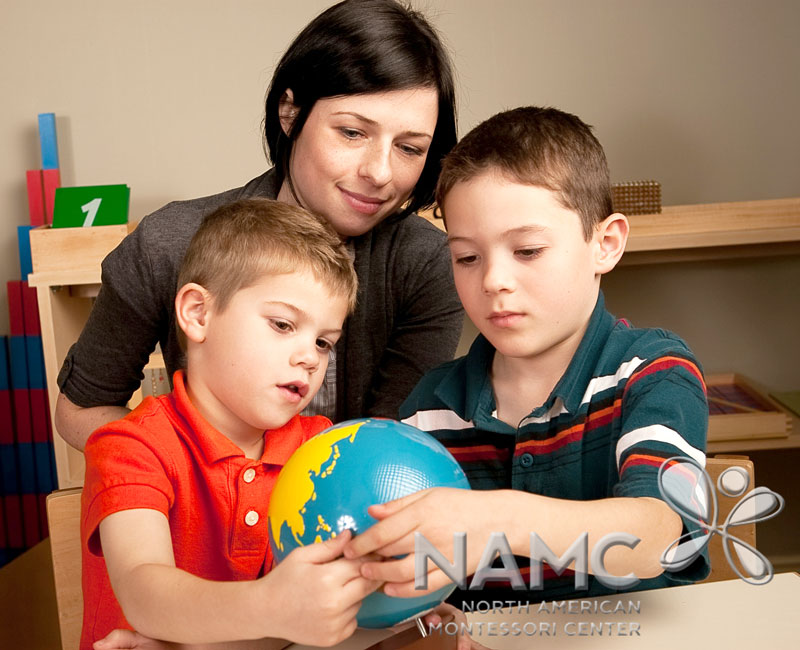
Maria Montessori observed that when children were given freedom in an environment suited to their needs, they flourished and reached their full potential. She noted that after a period of intense concentration and the opportunity to work with materials that were fully engaging, children were refreshed and content; their inner discipline and sense of peace seemed to grow. Dr. Montessori described this unique process in a child’s development as “normalization,” and she referred to it as “the most important single result of our whole work.” (The Absorbent Mind, p. 204)
Normalization in Montessori Elementary: A Teacher's Perspective
In my experience, every Montessori classroom reaches a period of normalization in a different time frame, unique to the individuals in the classroom. One factor that seems to affect the rate of reaching normalization is the environment’s ratio of returning students to new students. In my experience, when fewer than one-third of the children are new, younger students, the classroom reaches a period of normalization sooner than when more of the children are new. Older returning students are role models and leaders in the classroom who the new students look to for cues on work ethic, courtesy, and social skills.
Pairing the new, not yet normalized students with older role models or mentors is a wonderful way for the older students to develop leadership skills, and it also paves the way for normalization in the classroom.

The more time a Montessori teacher invests at the start of the year in presenting the important lessons of grace and courtesy and working through socially acceptable behaviors, the sooner the classroom will reach normalization. If misbehavior or, as Dr. Montessori referred to them, “deviations” occur, the teacher must address them right away so they do not become obstacles to the children’s development or to the normalization of the classroom. The teacher can manage challenging behavior by redirecting the children to interesting and purposeful activities. She must remain diligent in redirecting them if they are unfocused, especially while encouraging normalization at the beginning of the year. According to Dr. Montessori, the normalization process usually takes a period of approximately six weeks.
Carefully preparing the Montessori environment is another important step in helping the children attain normalization.
In every aspect, the classroom should be orderly, enriched, and beautiful. This includes the activities that are available to the children. One way of encouraging normalization is to prepare a variety of practical life activities for the children. Practical life lessons are meaningful, real-life activities that can be completed in a short amount of time. Working on practical life activities builds the child’s focus and concentration, which leads to normalization. This is especially true for children in the early childhood environment, but it also applies to elementary students. Once a child has begun to focus and concentrate, the Montessori teacher must never interrupt him as this is an important step toward normalization.
The attitude of the teacher is also important in guiding children toward normalization.
Dr. Montessori states that the Montessori teacher must demonstrate patience rather than anger. Impatience and unkindness will not lead to the development of confidence and independence in children. The Montessori teacher is an important part of the child’s environment, and as such, she can either inhibit or promote normalization.
How will you know when your students are normalized? When the classroom has reached normalization, students will display the following behaviors:
- Love of work
- Concentration
- Self-discipline
- Sociability
Maria Montessori believed that these truly “normal” characteristics of childhood emerge when the students’ developmental needs are met.
As much as possible, NAMC’s web blog reflects the Montessori curriculum as provided in its teacher training programs. We realize and respect that Montessori schools are unique and may vary their schedules and offerings in accordance with the needs of their individual communities. We hope that our readers will find our articles useful and inspiring as a contribution to the global Montessori community.
© North American Montessori Center - originally posted in its entirety at Montessori Teacher Training on Monday, March 14, 2016.
© North American Montessori Center - originally posted in its entirety at Montessori Teacher Training on Monday, March 14, 2016.

0 comments:
Post a Comment
Have questions or comments? Let us know what you thought about this article!
We appreciate feedback and love to discuss with our readers further.